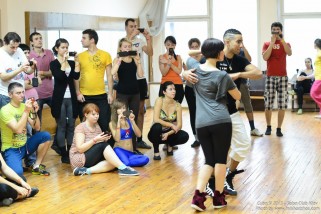Which blended-actions studies is conducted in Nepal, an enthusiastic LMIC into the The southern part of Asia, comprised of 77 areas
Configurations
The newest decimal part entailed a secondary studies of one’s Nepal Group and you will Health Survey (NDHS) 2016, a nationally affiliate questionnaire, since qualitative parts entailed meeting analysis thru interview and classification talks stored in two purposively chosen sites-one rural local government (Kaligandaki) and another metropolitan local government (Chapakot) into the Syangja section. The newest HMG meetings throughout these configurations had a predetermined date and you can place (7th and you may 14th of every Nepali times within the Kaligandaki and you may Chapakot respectively). Both in municipalities, brand new HMG meetings usually endured for a couple of to three days and you can were presented in tandem together with other meetings/factors such Partnersuche mit 30 als Mann as antenatal care and attention (ANC) check-ups, ladies’ innovation meetings, cost benefits courses, and blood pressure levels proportions. If you find yourself Kaligandaki’s HMG conferences occurred inside the a predetermined structure place, ladies in Chapakot satisfied in the great outdoors-heavens.
Members and Data Range
Towards the decimal analysis component, we made use of study in the NDHS 2016, which in fact had a response speed off 98.3% . Factual statements about the try dimensions calculation and you may testing steps are revealed on the NDHS 2016 declaration . To answer the search question, i removed NDHS women’s survey data gathered certainly one of women aged fifteen–44 age have been conscious of HMG conferences in their teams. These analysis was in fact obtained because of the trained interviewers playing with organized forms you to incorporated status, women’s many years, ladies degree, wealth quintile, quantity of college students significantly less than 5 years, house headship, remoteness, loved ones dimensions, health care choice founder, ladies’ a job reputation, and you will involvement in the HMG group meetings .
Into qualitative role, i built-up no. 1 investigation by the carrying out thirty five within the-breadth interviews (IDIs) having 1000-day female, FCHVs and you can health experts and you will seven attract group discussions (FGDs) that have FCHVs, wellness gurus, and men and women decision-makers alone (strategies for these types of IDIs and you will FGDs try revealed in other places ). The newest IDIs and you can FGDs guide inquiries were devised so you can fall into line having the research question and you may arranged based on the literature toward mother’s category [six, 8] plus the regional framework out of HMGs inside Nepal. These types of instructions was in fact in addition to pre-checked-out and you may changed, as expected. The major topics searched towards other types of investigation players was basically perceptions of your HMG, plus appointment position, awareness of the latest conferences, barriers and you can enablers having participation, women’s need for and identified value of HMGs, therefore the approaches for strengthening HMG participation.
Research government and you may investigation
In the quantitative analysis, participation in HMG meetings in the last six months was dichotomised as “Yes” if the mother attended at least one or more meetings in the previous six months, and “No” otherwise. Associations between different socioeconomic variables and participation in the HMG meetings in the last six months were assessed using a multivariable logistic regression accounting for sampling weights and sampling design (i.e., stratification and clustering). Standard errors were computed using the linearized variance estimator based on a first-order Taylor series linear approximation . The regression model included women’s age (15–25,26–35,36–45,46–49 age groups), women’s education (no education, primary, secondary and higher schooling), caste (Brahmin/Chhetri, Janajati, Dalit and others), household headship (women and men), wealth quintile (as per the original survey, poorest, poorer, middle, richer and richest), remoteness (rural and urban), number of children under five years of age (none, one or two children and three or more children), women’s employment status (yes and no), family size (less than five and five and above), and health care decision maker (wife alone, husband and wife joint, and husband alone and other family members). These variables were selected considering the existing literature and the local context of Nepal [6, 8]. Since we purposefully limited the data set to women who were aware of HMGs meeting in their ward, we accounted for this subpopulation selection in the analysis. Quantitative analyses were conducted using Stata (version 15) and results were presented as adjusted odds ratios (aORs) with 95% confidence interval (95% CI). Differences with p-values




